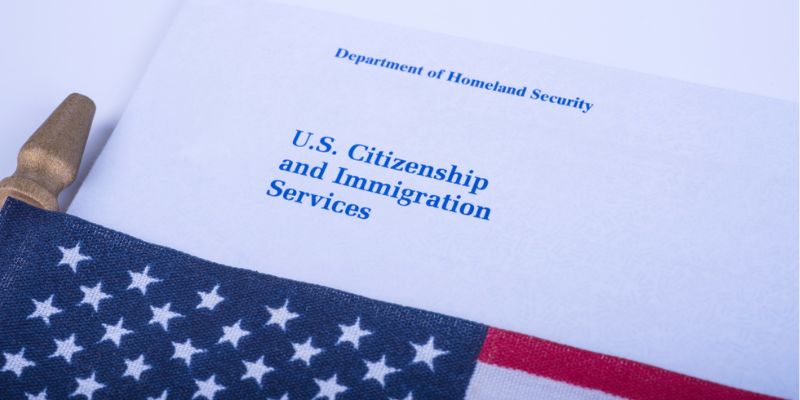
By Marta Lillo
The U.S. Citizenship and Immigration Services (USCIS) clarified information regarding two aspects of the EB-5 application process: the sustainment period for the timeframe for EB-5 investors who filed Form I-526 either on or after Mar. 15, 2022, and how the agency treats investors associated with a terminated regional center (RC).
In a policy guidance announcement, the USCIS explained how it interprets these two aspects as part of the changes the Reform and Integrity Act of 2022 (RIA) made to the EB-5 investor visa program and the Immigration and Nationality Act (INA).
Clarifications about how USCIS calculates the sustainment period for EB-5 petitions
The first aspect concerns the sustained period for the required investment timeframe for standalone and regional center EB-5 investors that want to remove residence conditions who filed Form I-526 on or after Mar. 15, 2022, as outlined in RIA 2022.
The agency specified the starting date for the two-year period under section 203/b)(5)(A)(i) of the INA for EB-5 investors seeking to remove conditions on their permanent resident status based on an EB-5 immigrant visa petition filed after the new regulation came into effect.
“We will use the date the investment was contributed to the new commercial enterprise [NCE] and placed at risk in accordance with applicable requirements, including being made available to the job-creating entity. If invested more than two years before filing the I-526 or I-526E petition, the investment should generally still be maintained at the time the I-526 or I-526E is properly filed so we can appropriately evaluate eligibility,” the agency said.
The USCIS explained the RIA removed the requirement for EB-5 investor to maintain their investment throughout their conditional residence; modified section INA 203(b)(5)(A)(i) regarding classification to invest or be actively in the process of investing the required amount of capital in an NCE; and, finally, affirmed that the investment amount must remain invested for a minimum of two years.
Therefore, standalone and regional center EB-5 investors filing petitions for classification post-RIA “no longer need to sustain their investment throughout their conditional residence, which may be many years in the future and dependent on factors outside the investor’s control such as visa availability.”
In an emailed statement, Yiran Cheng, Head of Communication of the American Immigrant Investor Alliance (AIIA), says the policy guidance happens after months of advocacy and relationship building in Congress, submission of public comments, and meeting with the USCIS Ombudsman’s last week where to discuss hardships faced by EB-5 investors.
Regarding the limitation of the sustainment period, Cheng adds that “while this decision is certainly an additional layer of protection for post-RIA investors, we are incredibly disappointed to learn that USCIS has decided not to apply it to pre-RIA investors.”
The decision affects pre-RIA investors from China and India mainly, who face an EB-5 application backlog “that has mired their finances, their life planning, and their immigration journeys. These are the people who are most hurt by redeployment and opaque sustainment periods, and they deserve the same level of institutional protection.”
He concludes by stating that the organization will continue asking the USCIS to apply the same sustainment period to pre-RIA investors “and not deny their I-829 petitions should they opt to be repaid at the end of their initial project’s investment term if job creation and other requirements have been met.”
USCIS’ treatment of pre-RIA investors associated with a terminated EB-5 regional center
The agency also clarified a second aspect: its treatment of EB-5 investors who applied through a regional center that was terminated, in accordance with changes introduced by RIA to section 203(b)(5)(M) of the INA.
This clarification concerns the impact a situation like this has on the application process of an EB-5 investor associated with a terminated RC. Before RIA, the agency treated this event as a “material change” to EB-5 investors’ eligibility without conditional permanent resident status, resulting in denials or revocations.
In 2022, RIA added a provision to section INA 203(b)(5)(M) that allows “good faith” investors linked with a terminated RC to maintain eligibility in certain cases. However, this new provision did not specify whether it applied only to post-RIA investors or pre-RIA investors.
The USCIS clarified that the provision added to INA 203(b)(5)(M) does apply to pre-RIA investors associated with a terminated regional center. “Rather than strictly applying certain timeframes under INA 203(b)(5)(M), we will extend the deadline for pre-RIA investors to respond to a regional center termination notification until the agency adjudicates their Form I-526 petition,” it said.
In fact, if required, the U.S. immigration agency could issue a Request for Evidence (RFE) or Notice of Intent to Deny (NOID) for pre-RIA EB-5 investors to establish continued eligibility.
The second factor the USCIS clarified pertains to a potential extension to the response deadline for notices of continued eligibility. The agency cautioned that if it’s unable to meet the 180-day response period for these notices, it may use procedural flexibility to extend this deadline, ensuring enough time to respond.
Also, terminating a regional center for noncompliance doesn’t necessarily affect EB-5 eligibility as long as the investment and job creation remain undisturbed. Finally, the agency explained it cannot extend response deadlines if an RC is terminated for reasons that affect investors’ eligibility.
DISCLAIMER: The views expressed in this article are solely the views of the author and do not necessarily represent the views of the publisher, its employees. or its affiliates. The information found on this website is intended to be general information; it is not legal or financial advice. Specific legal or financial advice can only be given by a licensed professional with full knowledge of all the facts and circumstances of your particular situation. You should seek consultation with legal, immigration, and financial experts prior to participating in the EB-5 program Posting a question on this website does not create an attorney-client relationship. All questions you post will be available to the public; do not include confidential information in your question.








